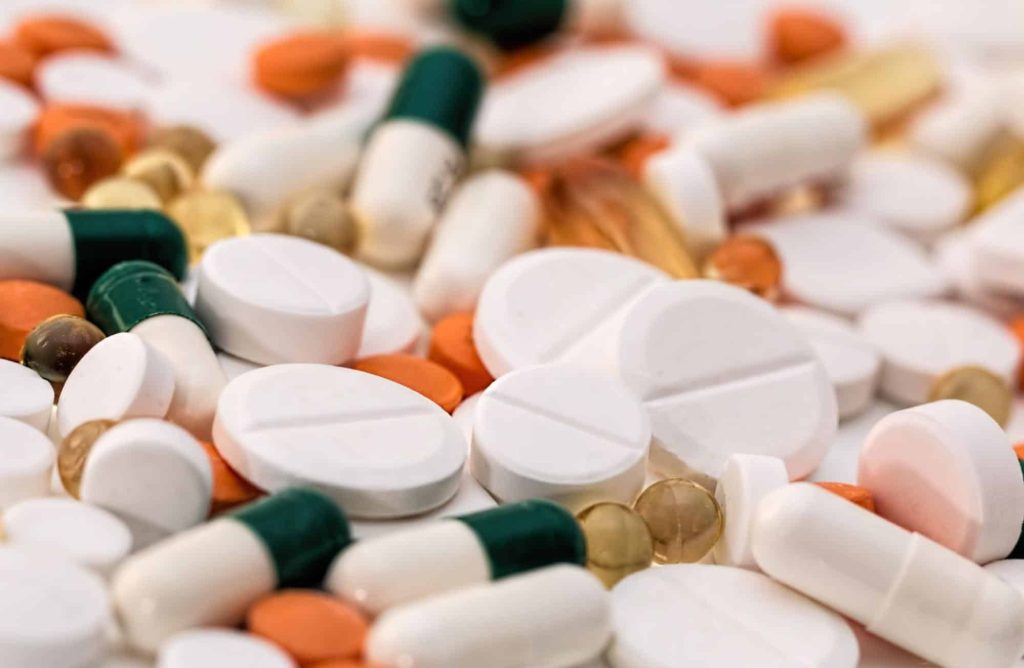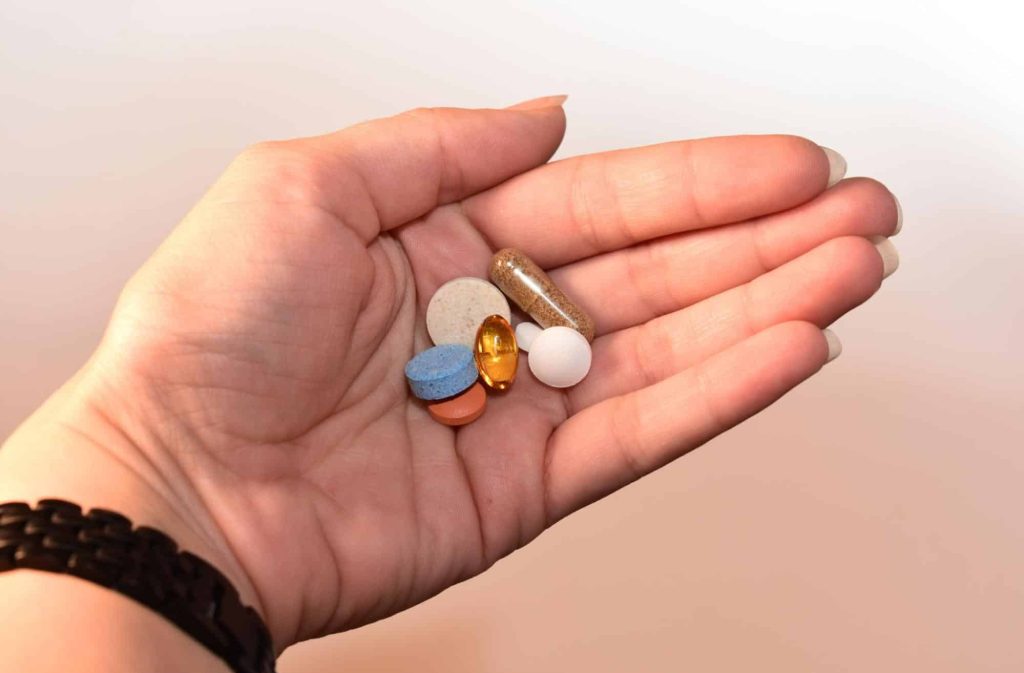List of Opioids: Composition, Effects & Names [Opioid Database]
List of Opioids: Composition, Effects & Names [Opioid Database]
The term “opioids” encompasses a wide range of drugs, from prescription opioids used to alleviate pain to illegal opioids used for non-medical purposes. Nonetheless, all types of opioids are addictive and alter the central nervous system. For this reason, it’s crucial to get a better understanding of how they work and how they are categorized.
Our opioid database contains a comprehensive list of opioids that commonly cause opioid dependence and addiction. In addition to this list, this opioid database covers:
- Types of Opioids
- List of Painkillers
- Opioid Addiction and Symptoms
- Opioid Safety
- Facts About Opioids
What Are Opioids?
Opioids are a type of drug that has pain-relieving properties. They are typically prescribed to treat acute or chronic pain. The three main types of narcotics are natural, semi-synthetic, and synthetic.
Opioids reduce the perception of pain by interacting with opioid receptors in the central nervous system. By bonding to opioid receptors, they block the pain signals from reaching the brain, thus alleviating pain. Besides providing pain relief, opioids can induce feelings of euphoria, as they affect the mesolimbic reward pathway in addition to the pain pathway in the brain.
Moreover, using opioids activates dopamine release and initiates the production of more opioid receptors, all the while reducing endorphin production. As a result, people who use opioids not only feel pain relief and euphoria but also develop opioid tolerance.
Once a person develops tolerance for opioids, they need a larger amount of opioids to achieve the same effects as previously, which can lead to opioid use disorder (OUD).
Effects of Opioids
Opioid-dependent individuals often exhibit severe mood swings as well as noticeable behavior changes. The person may exhibit any of the following side effects:
- Euphoria followed by depression
- Skewed judgment
- Rapid heartbeat
- Restlessness
- Slurred speech
- Diminished coordination
- Hyperactivity
- Lack of concentration
Immediately after taking the drugs, addicts will usually experience increased body temperature, euphoria, heavy limbs, and a dry mouth. The user also alternates between drowsy and wakeful states and cannot participate normally.
List of Opioids
Below you will find a complete list of opioids—including prescription opioids and illegal opioids—that are commonly used throughout the world. Our opioid database features both generic and brand names.
Codeine is a prescription medication which relieves mild to moderate pain. It was originally discovered as a naturally occurring constituent of opium. However, today’s pharmaceutical-grade codeine is produced with methylating morphine. Codeine comes alone or combined with another painkiller such as Tylenol® (acetaminophen). It is formulated into tablets, capsules or liquid to be taken orally. Codeine and codeine-combo preparations are usually taken every 4-6 hours. Since codeine can be habit forming, care must be taken to follow the doctor’s instructions (Read here on Codeine withdrawal). Do not take a larger dose, or take it more frequently, or take it for longer than the doctor has prescribed.
Heroin is a highly addictive drug, and its use is a serious problem in the United States. Recent studies suggest a shift from injecting heroin to snorting or smoking because of the increased purity and the misconception that these behaviors will not lead to dependency.
Heroin is processed from morphine, a naturally occurring substance extracted from the seedpod of the Asian poppy plant. Heroin usually appears as a white or brown powder. Street names for heroin include “smack,” “H,” “skag,” and “junk.” Other names may refer to types of heroin produced in a specific geographical area, such as “Mexican black tar.”
Heroin Health Hazards
Heroin abuse is associated with serious health conditions, including fatal overdose, spontaneous abortion, collapsed veins, and infectious diseases such as HIV/AIDS and hepatitis.
The short-term effects of heroin abuse appear shortly after a single dose and disappear in a few hours. After a heroin injection, the user reports feeling a surge of euphoria (“rush”) accompanied by a warm flushing of the skin, a dry mouth, and heaviness in the extremities. Following this initial euphoria, the user goes “on the nod,” a state of alternating wakefulness and drowsiness. Heroin depresses the central nervous system which clouds the user’s mental functioning.
There are long-term effects of heroin that appear after repeated use. Chronic users may develop collapsed veins, infection of the heart lining and valves, abscesses (pus-filled pocket inside inflamed by infected tissue), cellulitis (a bacterial infection of the skin), and liver disease. Pulmonary complications, including various types of pneumonia, may result from the poor health condition of the abuser, as well as from heroin’s depressing effects on respiration.
Additionally, street heroin may contain additives that do not readily dissolve thereby clogging the blood vessels that lead to the lungs, liver, kidneys, or brain. This can cause infection or even death of small patches of cells in vital organs.
Reports from SAMHSA’s 1995 Drug Abuse Warning Network (DAWN), which collects data on drug-related hospital emergency room episodes and drug-related deaths from 21 metropolitan areas, rank heroin as the second-highest drug involved in drug-related deaths. From 1990 to 1995, the number of heroin-related episodes doubled. Between 1994 and 1995, there was a 19 percent increase in heroin-related emergency department episodes.
Hydrocodone is an effective antitussive (anti-cough) agent, and as an opiate, it is also an effective analgesic for mild to moderate pain control. Five mg of hydrocodone is equivalent to 30 mg of codeine when administered orally. Early comparisons concluded that hydrocodone and morphine were equipotent for pain control in humans. However, it is now considered that a dose of 15 mg (1/4 gr) of hydrocodone is equivalent to 10 mg (1/6 gr) of morphine. Hydrocodone is considered to be morphine-like in all respects.
Sales and production of this drug have increased significantly in recent years (a four-fold increase between 1990 and 2000), as have diversion and illicit use. Trade names include Anexsia®, Hycodan®, Hycomine®, Lorcet®, Lortab®, Tussionex®, Tylox®, Vicodin®, and Vicoprofen®. These are available as tablets, capsules, and/or syrups. Generally; this drug is abused orally rather than through intravenous administration. Currently, about 20 tons of hydrocodone products are used annually in the United States.
Methadone is a synthetic substance with pharmacological properties similar to morphine and heroin. Methadone is prescribed for patients with severe pain, such as those with serious injuries or those who have undergone major surgery. Methadone works in the brain to decrease the sensation of pain and to mute the emotional response to pain. It comes as tablets, dispersible tablets, liquid, and liquid concentrate. Patients take it every 3-4 hours for severe pain and every 6-8 hours for chronic pain. Since methadone can be as addictive as morphine and heroin, care must be taken to follow the doctor’s instructions. Do not take a larger dose, or take it more frequently, or take it for longer than the doctor has prescribed. Methadone is one of the most difficult drugs to detox from since its effects are long-lasting and it is readily stored in the body’s tissue.
Methadone is also used as a replacement-opiate therapy for opiate dependency. A legal dependency (methadone) is substituted for an illegal dependency (heroin). Methadone is available in government-approved drug treatment clinics and by prescription in some areas.
OxyContin® is the brand name for the time-release formula of oxycodone, a narcotic analgesic for moderate to severe pain. It is used to treat terminally ill cancer patients and chronic pain sufferers as well as relieving postpartum, postoperative and dental pain. OxyContin® comes in liquid and tablet forms are taken every 6 hours. Long-acting tablets are available to take every 12 hours. Oxycodone is an opium derivative and is the active ingredient in Percodan® and Percocet®. Oxycodone binds to the pain receptors in the brain so that the sensation of pain is reduced. Since oxycodone can be habit-forming, care must be taken to follow the doctor’s instructions when taking OxyContin®. Do not take a larger dose, or take it more frequently, or take it for longer than the doctor has prescribed. Since its FDA approval in 1995, the illegal use of OxyContin® has increased significantly, and recent OxyContin-related deaths have attracted media attention, thereby illuminating the problem.
Percocet® is the brand name for the combination of acetaminophen (Tylenol) and oxycodone. Percocet® is prescribed for moderate to moderately severe pain. Oxycodone binds to the pain receptors in the brain so that the sensation of pain is reduced. Acetaminophen halts the production of prostaglandins which otherwise cause pain. It is available in tablet, capsule, and liquid form and is taken every 6 hours by mouth. Since oxycodone can be habit-forming, care must be taken to follow the doctor’s instructions when taking Percocet®. Do not take a larger dose, or take it more frequently, or take it for longer than the doctor has prescribed.
Suboxone (Buprenorphine) is a semi-synthetic narcotic; Suboxone is a sublingual formulation that is a combination of Buprenorphine and Narcan. Suboxone cannot be injected, because the Narcan component causes instant opiate withdrawal. In this form (taken sublingually) the Buprenorphine is absorbed through the mucous membrane, while the Narcan is not.
Tramadol is used to relieve severe pain. Tramadol may be used to treat pain caused by surgery and chronic conditions such as fibromyalgia or arthritis. Tramadol is an opiate (narcotic) analgesics. Tramadol works by decreasing the body’s sense of pain.
Tramadol is habit-forming if abused. Tramadol should only be taken under a doctor’s care and orders. Call your doctor if you find that you want to take extra medication or notice any other unusual changes in your behavior or mood.
Vicodin® is the brand name for the combination of acetaminophen (Tylenol) and hydrocodone. Vicodin® is prescribed for moderate to moderately severe pain. Hydrocodone binds to the pain receptors in the brain so that the sensation of pain is reduced. Acetaminophen halts the production of prostaglandins which otherwise cause pain. Vicodin® is available in a tablet, capsule, and liquid form and is taken every 4-6 hours by mouth. Since hydrocodone can be habit-forming, care must be taken to follow the doctor’s instructions when taking Vicodin®. Do not take a larger dose, or take it more frequently, or take it for longer than the doctor has prescribed.
Types of Opioids
Based on their origin, opioids are classified into the following three groups:
- Natural. Natural opiates are alkaloids found in plants. Morphine and codeine are some examples of such opioids.
- Semi-synthetic. Semi-synthetic opioids (e.g., oxycodone and heroin) are created in laboratories by chemically processing natural opiates.
- Synthetic. Synthetic opioids are human-made and don’t contain natural opiates. The list of opioids that are fully synthetic includes fentanyl, methadone, and more.
Furthermore, opioids can also be classified into opioid agonists (e.g., morphine), partial agonists (buprenorphine, tramadol, etc.), and antagonists (such as naloxone), depending on their impact on opioid receptors.
Ultimately, all of the above-mentioned types of opioids fall into one of two groups: prescription opioids and illegal opioids.
Prescription Opioids

Prescription opioids are a type of opioids prescribed to treat acute, chronic, moderate, or severe pain.
Most commonly, medical professionals prescribe this type of opioids to treat pain associated with conditions such as cancer or relieve pain after injuries or surgery. Sometimes, prescription opioids can also be used for diarrhea, intense coughing, and other health conditions.
If you’re taking these, it’s important to closely follow your doctor’s recommendations. Although they can alleviate pain, prescription opioids are addictive and easy to misuse.
Most commonly, people misuse prescription opioids by increasing the amount of opioids they take. Alternatively, they may take opioids more frequently or longer than recommended.
Ideally, prescription opioids should be used for a short time, as longer use can lead to opioid tolerance, cravings, physical dependence, and addiction.
The list of opioids commonly prescribed to treat pain includes:
- Morphine
- Codeine
- Fentanyl
- Methadone
- Oxycodone
- Oxymorphone
- Hydrocodone
- Hydromorphone
- Tapentadol
- Tramadol
- Buprenorphine
- Oliceridine
- Meperidine
Illegal Opioids
Illegal opioids are typically used for non-medical purposes. Some examples of illicit opioids include heroin and non-pharmaceutical fentanyl. Illegal opioids also refer to drugs that resemble prescription opioids and are sold illegally.
Created to mimic the effects of natural opiates, illegal opioids are street drugs used to get “high” rather than to relieve pain. They come with a plethora of risks and dangers since they often contain unknown substances.
Not to mention, it’s impossible to accurately gauge the strength of illegal opioids and, in turn, determine their safe dosage. Due to this, illegal opioid use can lead to opioid overdose and death.
List of Painkillers

Although opioids can be used to treat different conditions, such as coughing, they’re most commonly used for pain relief. As painkillers, opioids are typically only prescribed to treat moderate and severe pain when weaker pain medication is ineffective.
Here’s a list of opioids that are commonly used for pain relief and their brand names:
- Buprenorphine (Buprenex, Butrans®, Sublocade®, Belbuca®, Probuphine)
- Codeine (Damylin® with codeine, Tylenol® with codeine, Fioricet® with codeine, Phrenilin with Caffeine and Codeine, Cotabflu, Colrex, Fiorinal with Codeine, Soma compound with Codeine, Poly-Tussin)
- Fentanyl (Actiq, Duragesic, Abstral®, Subsys, Lazanda, Fentora)
- Hydrocodone (Zohydro® ER, Hysingla® ER, Hycodan®)
- Hydrocodone and acetaminophen (Vicodin®, Lortab®, Norco, Lorcet®, Hycet)
- Hydromorphone (Dilaudid®, Exalgo®, Palladone®)
- Meperidine (Meperitab, Demerol®)
- Methadone (Dolophine®, Methadose®, Diskets®)
- Morphine (Kadian®, Morphabond®, Roxanol®, MS Contin, Morphabond, Oramorph SR)
- Oliceridine (Olynvik®)
- Oxycodone (OxyContin®, Roxicodone®, Dazidox, Oxaydo®, Eth-Oxydose, Oxydose®, Oxy IR®)
- Oxycodone and acetaminophen (Percocet®, Oxycet®, Tylox®, Roxicet, Endocet, Primalev, Magnacet, Narvox)
- Oxycodone and naloxone (Targiniq ER)
- Oxymorphone (Opana®, Opana ER®)
- Tapentadol (Nucynta®, Nucynta ER®)
- Tramadol (Ultram, Ryzolt, ConZip, Rybix ODT)
Opioid Addiction and Symptoms
Anyone who takes opioids faces the risk of developing opioid addiction, but the risk especially increases for long-term opioid users.
Simply put, opioids act similarly to endorphins, relieving pain and, for some users, inducing positive feelings. Opioids affect the central nervous system by binding to opioid receptors to reduce pain, and, at the same time, they help release endorphins and dopamine. This can induce euphoria, which might also put you at risk of developing addiction.
As your body becomes used to the prescribed dose, your opioid tolerance increases. This means that the prescribed dose no longer produces the same pain relief and/or euphoria. At this point, people may be tempted to increase the amount of opioids they take.
Moreover, since opioids block the natural production of endorphins and increase the production of opioid receptors, you may feel like you need to take opioids to function normally. This is a sign of opioid dependence.
Some symptoms of opioid addiction include:
- Craving opioids
- Feeling unable to control or reduce opioid use
- Experiencing opioid withdrawals, which can lead to further opioid use
- Being preoccupied with obtaining and using opioids
- Continuing opioid use despite social, personal, and work-related problems
Opioid Safety
It goes without saying that anyone using opioids should treat opioid safety as a top priority, as it’s the most effective way (besides not taking opioids) to avoid their negative effects.
Here are some tips that can help you ensure you’re taking prescription opioids as safely as possible:
- Take prescription opioids exactly as directed.
- Don’t mix opioids with alcohol and sedatives.
- If you need to take other types of medication or you think you might need to increase your opioid dose, consult your healthcare provider before proceeding.
- Buy all of your medicine from the same pharmacy, as they keep a record of your purchases and can warn you if some of your medicine shouldn’t be taken with opioids.
- Never take expired opioids.
Facts About Opioids

The list of opioids included in this article contains many different types of medications, but one thing holds true for all of them—without exception, they’re all potentially dangerous. Because of this, it’s important to make an informed decision before initiating opioid use.
So, here are some lesser-known facts about opioids you should know about:
- While most people taking prescription opioids don’t use illegal opioids, nearly 80% of people using heroin have used prescription opioids in the past. This means that people who use prescription opioids are at an increased risk of using heroin, especially because heroin is often cheaper than prescription opioids.
- Although both prescription and illegal opioids can induce euphoria, not all people who take opioids experience it. However, feeling euphoric after opioid use may be a risk factor for opioid addiction, as people may be more inclined to take opioids if their use results in intense, positive feelings.
- Illegal opioids are often mixed with fentanyl, which is between 50 and 100 times stronger than prescription opioids. For this reason, buying any kind of opioids illegally greatly increases the likelihood of overdose.
- Besides stopping your brain from receiving pain signals, opioids also prevent your brain from receiving signals your body sends to breathe. This potentially lethal condition is known as opioid-induced respiratory depression (OIRD). For this reason, people with respiratory conditions should be especially careful when taking opioids.
Opioid FAQ
#1. What are the different kinds of opioids?
Some of the most common kinds of opioids are morphine, oxycodone, codeine, fentanyl, and hydromorphone. Morphine and codeine are natural opioids; oxycodone and hydromorphone are semi-synthetic opioids, and fentanyl is a synthetic opioid.
#2. Are prescription opioids addictive?
Yes, prescription opioids are addictive, which means that anyone taking prescription opioids risks developing opioid use disorder (OUD). The risk especially increases for people who take opioids regularly and for a long time, with 25% of patients in primary care settings becoming addicted to opioids after long-term opioid use.
#3. How is opioid addiction treated?
While there are different ways of treating opioid addiction, the most effective method is the Accelerated Neuro-Regulation (ANR) treatment. Rather than masking symptoms, the ANR treatment tackles the core of opioid addiction by resetting the brain and the endorphin system to their pre-addiction state.
#4. Are prescription opioids safe during pregnancy?
Taking prescription opioids during pregnancy can lead to neonatal abstinence syndrome (NAS), which is why it’s best to avoid using opioids when you’re pregnant. That said, if the mother already has OUD, abruptly quitting long-term opioid use can be dangerous. In this case, your best option is to consult your healthcare provider.
Key Takeaways
As you can see from our list of opioids, there are different types of opioids and ways to categorize them. Nonetheless, all kinds of opioids pose a risk to your health, especially if you rely on them long-term.
Before you leave, here’s a brief summary of the key points we covered:
- “Opioid” is a broad term that typically refers to pain-relieving drugs, but it also includes illicit opioids.
- The side effects of opioids include restlessness, hyperactivity, lack of focus, euphoria, an increased heart rate, and others.
- Besides heroin, non-pharmaceutical fentanyl, and other illicit drugs, the term “illegal opioids” can also refer to drugs similar to prescription opioids that are sold illegally.
- Opioid addiction is a result of brain changes that occur after long-term opioid use.
- The best way to prevent opioid addiction is to not initiate opioid use in the first place. Still, you can reduce your chances of developing OUD by using opioids exactly as instructed.






